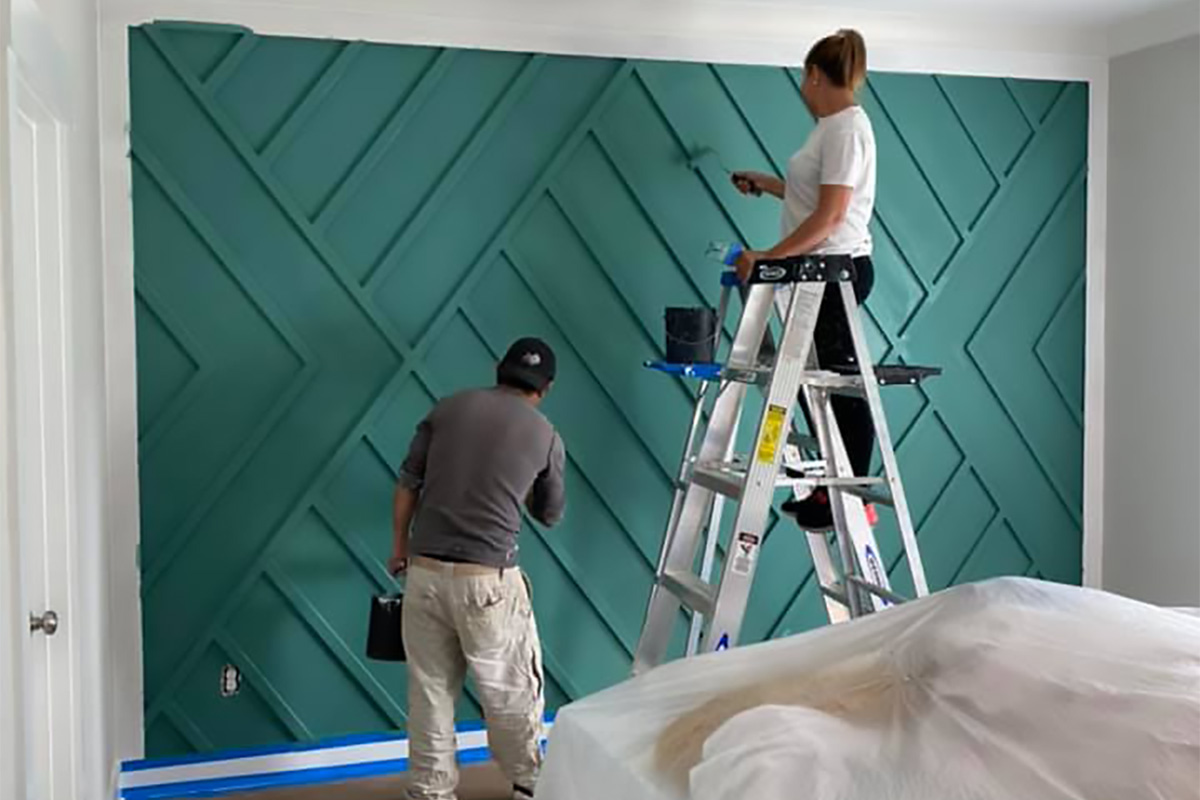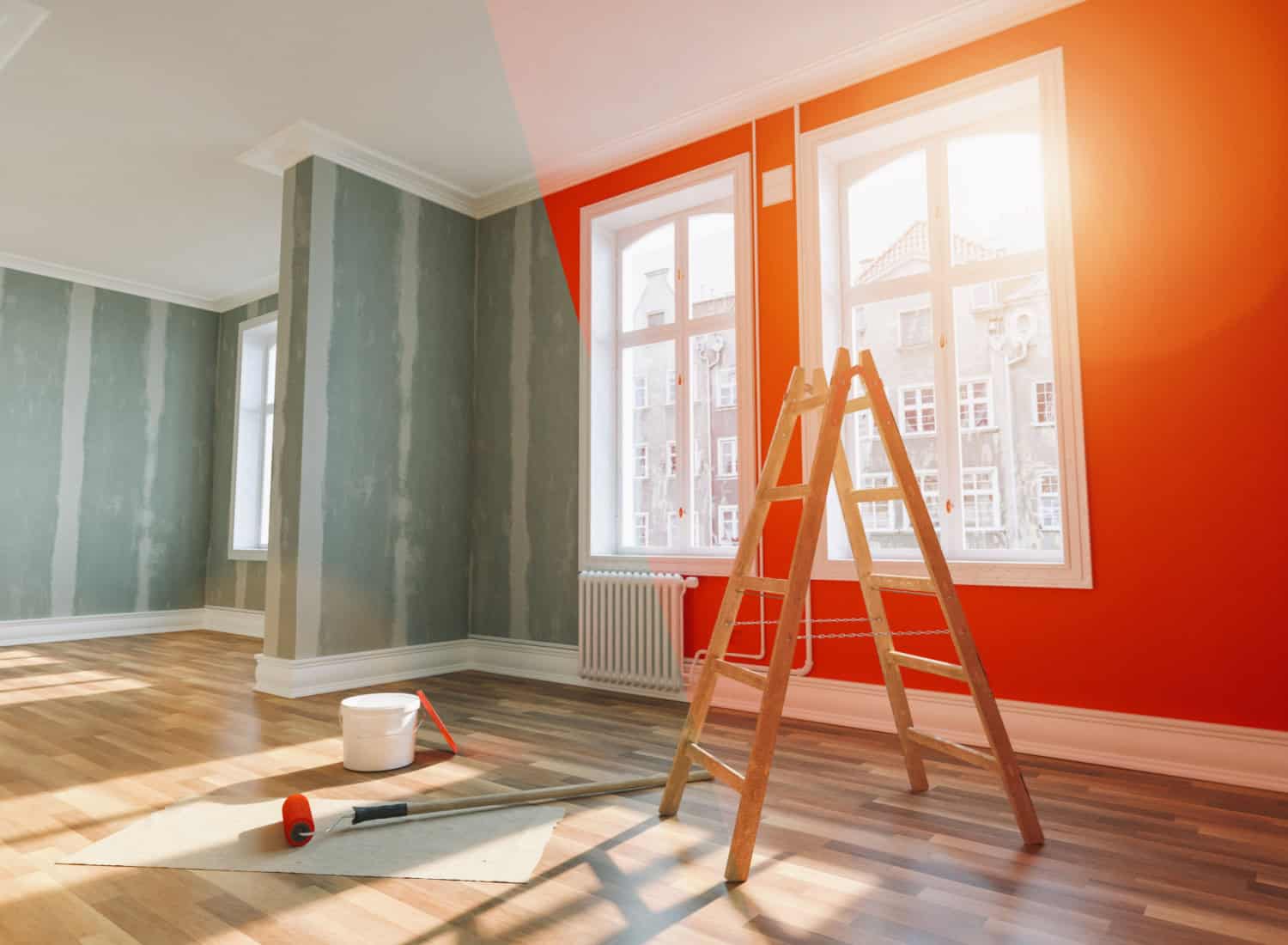Get Professional Lakewood Interior Painting for a Seamless, Beautiful Finish
Wiki Article
Enhance Your Interior Decoration With Comprehensive Color Assessment
The integration of shade consultation right into interior style presents an one-of-a-kind opportunity to improve and elevate the emotional and aesthetic resonance of a space. By engaging with a skilled color professional, you can browse the complexities of shade option, guaranteeing that your selections not only complement building features however additionally resonate with personal design and emotional impact.Advantages of Shade Consultation

Moreover, color appointment aids in making the most of all-natural light and optimizing spatial assumption. Lighter hues can make an area appear even more expansive, while darker shades develop an intimate setting. Cleveland Metro Painting Specialists. This calculated application of shade can considerably affect the total ambiance of any type of indoor space
Additionally, specialist consultants possess a detailed understanding of ageless standards and existing fads, guaranteeing that the selected shades will remain appealing with time. This insight can save customers from costly redesigns in the future. Shade appointment encourages customers by giving them with a clear vision and instructions, cultivating self-confidence in their style options and ultimately leading to a much more rewarding and successful interior layout outcome.
Comprehending Color Psychology
The significance of shade psychology in indoor style can not be overstated, as it dives into the emotional and psychological effects that various colors can stimulate in individuals. Shades can affect mood, behavior, and also performance, making them a vital factor to consider in any layout job.For instance, cozy shades such as red, orange, and yellow are commonly connected with energy and heat. They can stimulate sensations of enjoyment and convenience, making them appropriate for social spaces like living areas or kitchen areas. Conversely, awesome colors like blue, environment-friendly, and purple tend to stimulate calmness and peace, making them optimal for bedrooms or meditation locations.
Furthermore, the usage of neutral tones can produce a well balanced environment by enabling the bolder shades to stick out without overwhelming the senses. Recognizing these psychological effects makes it possible for designers to produce rooms that not just look aesthetically pleasing however also promote psychological health.
Incorporating color psychology right into indoor style entails a thoughtful selection of shades customized to the desired function of each room, ultimately improving the general experience for its owners. This awareness is vital for attaining a unified and practical indoor setting.
The Shade Wheel Explained
Recognizing the relationships between shades is necessary for reliable indoor layout, and the shade wheel serves as an important tool in this process. The shade wheel, created by Isaac Newton in the 17th century, highlights the spectrum of colors organized in a circular format. It comprises primary colors-- red, blue, and yellow-- that can not be developed by blending various other shades. Additional colors, developed by combining primary colors, consist of eco-friendly, orange, and purple. Tertiary colors result from mixing a key and a second shade, causing hues such as blue-green and red-orange.The color wheel aids designers grasp the relationships between shades, including corresponding, comparable, and triadic schemes. Corresponding colors, positioned contrary each other on the wheel, create lively contrasts that can stimulate a space. Comparable colors, situated alongside each other, give a harmonious and natural appearance. Triadic schemes make use of three equally spaced colors, supplying balance and visual passion.
Utilizing the color wheel in interior decoration not only boosts aesthetic charm yet likewise stimulates specific emotions and ambiences, making it a crucial recommendation for shade consultation. Comprehending these partnerships inevitably equips designers to produce rooms that are both aesthetically exciting and functional.
Selecting the Right Combination
An appropriate shade plan can combine a space, boost its attributes, and stimulate preferred emotions. Different rooms offer different functions and require palettes that mirror their designated use; for instance, serene shades such as soft blues or greens work well in rooms, promoting relaxation.Following, take into consideration the natural light readily available. Light can significantly modify exactly how colors show up, so it is necessary to evaluate the room at various times of the day. In addition, think about existing building aspects and furnishings. An unified palette needs to match these features, developing a cohesive appearance throughout the space.
When choosing shades, utilize the 60-30-10 regulation, which suggests that 60% of the room must be a dominant shade, 30% a second color, and 10% an accent color. This proportion guarantees equilibrium and aesthetic rate of interest (Cleveland Metro Painting Specialists). Example shades on the walls before dedicating, as this enables you to see just how the tones interact with one an additional and the total setting they create in your interior design project.
Dealing With a Color Consultant

When dealing with a color specialist, the procedure typically begins with a preliminary appointment. During this conference, you'll review your vision, preferences, and the existing elements in your area. The professional will certainly assess your requirements and may advise specific color combinations that line up with your objectives.
After developing an instructions, the professional will Cleveland Metro Painting Specialists certainly offer samples and aesthetic help to assist you imagine the recommended color pattern. This action is essential, as colors can appear in a different way under varying illumination conditions.
Furthermore, a color specialist can direct you in selecting complementary furnishings, artwork, and accessories to harmonize with your chosen palette. By teaming up closely, you can achieve a refined visual that raises your interiors and produces a welcoming environment. Eventually, the know-how of a shade specialist can substantially improve the overall impact of your design project.
Verdict
In summary, detailed color appointment serves as a crucial tool for improving indoor design. By leveraging professional understanding of color psychology and spatial characteristics, a tailored shade scheme can be established to evoke specific feelings and produce an unified environment.By engaging with a skilled shade specialist, you can browse the intricacies of color option, ensuring that your options not just enhance building features but likewise resonate with personal design and emotional influence. It comprises primary colors-- red, blue, and yellow-- that can not be produced by blending other colors.The color wheel assists designers comprehend the partnerships in between shades, consisting of complementary, comparable, and triadic plans.When choosing shades, use the 60-30-10 policy, which recommends that 60% of the room need to be a leading color, 30% a secondary color, and 10% an accent color. By leveraging expert knowledge of shade psychology and spatial characteristics, a customized shade scheme can be created to stimulate details feelings and produce a harmonious atmosphere.
Report this wiki page